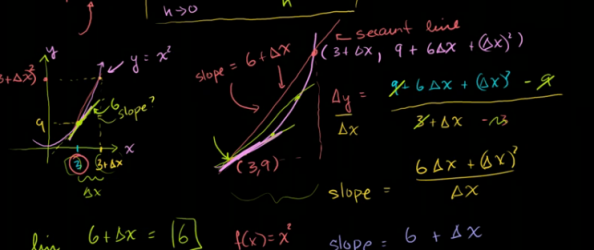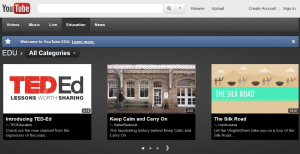Education Content Delivery: A Modern Approach
March 28, 2012 Shem Radzikowski 2 Comments

When I look at the education sector and how it has changed even within my short lifetime, I can do nothing but stand in awe as the changes continue to reverberate and send shockwaves throughout the globe.
Smart board & Tablet usage in Education
Just recently, I was invited to take part in a large educational project in Turkey to deliver something that hadn’t been done previously, at least not on such a massive scale.

Windows 8 UI
My team flew to Ankara and started to work on the infrastructure architecture as well as custom software development that would see Turkey’s entire 16 million student population supplied with tablet devices running the latest Microsoft Windows 8 operating system, including the highly-anticipated Metro user interface.
In addition to the tablets, the initiative also required that classrooms be fitted with touch-sensitive smart boards (running Windows) which could be wirelessly controlled by the teacher. The teacher was also able to control the student’s tablets, lock them down when needed, enforce access to resources as well as project any tablet’s screen onto the smart board.
What the Turkish government is trying to do is quite ambitious and a real game changer for the education sector. I won’t delve into the technical challenges, but I would like to comment on the areas of research that were of interest to me during the project.
Changing the Delivery of Education Material
Our research had us combing the vast ecosystem of educational content, connecting with vendors, laying down best practices, experimenting with new technologies and literally redesigning systems to operate in new and innovative ways.
As is usually the case with such initiatives, the amount of research required to solve the many unknowns was quite immense. But the breadth of interesting facts and gathering the collective knowledge of what others are doing in the education sectors was simply astonishing. People around the world are finding new channels of content delivery, new methods of teaching and discovering revolutionary solutions to old problems.
The advent of the Internet and HTML already foresaw the demise (at least in part) of the traditional paper-based textbook. But we are now facing a complete shift in how the classroom is being used. With the availability of high-quality video and audio on sites such as YouTube or Vimeo, anyone can upload tutorials and lectures on topics that were previously reserved to Ivy League institutions.

YouTube EDU
Recognizing the future demand for such services, these online giants are amassing educational content at an ever-increasing speed. YouTube, in particular, has even started a separate initiative called YouTube EDU which gives the viewer access to a “broad set of educational videos that range from academic lectures to inspirational speeches and everything in between.”
Khan Academy: The Real Pioneer
I watched a 60 Minutes special which talked about the Khan Academy and how it’s changing the face of learning, and all the while, doing it for free. I hadn’t previously visited the site, but shortly afterwards it became obvious that the quality of lecture content was on par, if not better, than reputable and well-established schools.
During a TED talk titled: “Let’s use video to reinvent education“, Salman Khan showed the power of interactive exercises, and calls for teachers to consider flipping the traditional classroom script — give students video lectures to watch at home, and do “homework” in the classroom with the teacher available to help.
The key message here is that the student no longer must endure lectures at prescribed times at the convenience of the teacher or school. The student can learn on demand at any time that is convenient, rewind, replay, bookmark, download and delve deeper into any subject. Time in the classroom can now be a special event which allows the student more time to truly collaborate with the teacher and address issues that were not able to be solved during the online lecture.
I was interested in the quality of the content, and truth be told, I haven’t touched calculus for a good 20 years — this would be a good litmus test. I pulled up the pre-calculus content and was able to keep up without any issues. I then jumped to a 15 minute lecture on derivatives and integrals, and although my memory was fuzzy with some of the more advanced topics, the way it was delivered allowed me to quickly recall my long neglected skills.
Khan Academy isn’t the only organization that is delving into this type of content delivery, but unlike other distance education courses, it does it for free, albeit without the diploma at the end. More recently, initiatives by MIT, Stanford University and University of California also address such a need — quality university-level courses delivered for free.
Happy (r)e-learning :)
References
Related
Content Delivery, Education, Khan Academy, Metro UI, Tablet, Technology, Turkey, Windows, Windows 8 Thoughts
2 Comments → “Education Content Delivery: A Modern Approach”
Leave a Reply
Subscribe
Subscribe and receive email notifications the moment Dr.Shem publishes a new post.
Our Sponsors
Recent Posts
- Dublin’s Breaking Point: Riots Expose Ireland’s Immigration Crisis
- Ireland’s Immigration Crisis: A Nation Overwhelmed
- My Journey with Ropes: Scaling New Heights
- Climbing Mountains in and Around Pokhara: An Adventure Beyond the Summits
- A Nomad’s Notebook: Charting My Path Across Continents
- From Pierogi to Pavlova: My Transcontinental Childhood
- Riding Through History: A Personal Journey on the Irish Rail System
- Above the Azure: Discovering the Thrills of Paragliding in Malta
- Immersed in Nature: A First-hand Experience of Hiking in Wicklow
- My Emerald Isle: Why Ireland is the Epitome of Home
- Life in Boulder Colorado: A Quick Guide to Boulderites’ Lifestyle, Culture, and Values
- Rekindling a 25-Year-Old Friendship: A Journey Through Time
- The Spirit of Ireland: A Brief History of Irish Whiskey
- Comparison of Firearm Purchase Procedures in California vs Texas
- First impressions on Austin, Texas and its Tech Scene
- Buying a Gun in California – Not as Easy as it Sounds
- Biometric Hype: A Risky Proposition for Fingerprint and Iris Scanners
- Temple Bar: A Great Place to Live, for the Deaf Insomniacs
- Zero Trust and The Mutating Threat Landscape
- CyberSecurity: Expanded Look at the APT Life Cycle and Mitigation
- Mentors: The Priceless Few and Lessons Learned
- Selected by Hackin9 and eForensics Magazines as a Contributing Cybersecurity Expert
- Notes from the Cloud Security Alliance (CSA) Congress EMEA 2015
- Analyzing the Power Consumption of Mobile Antivirus Software on Android Devices
- Poorly Configured Proxies Leaking Information through “X-Forwarded” and “Via” HTTP Request Headers
- CyberSecurity: A Case Study of the Need for Change
- Cyberconfusion: Cyber Security, Cyber-Security or Cybersecurity?
- CyberSecurity: Origins of the Advanced Persistent Threat (APT)
- A Newcomer’s Take on Dublin Town — First Impressions
- Crypto Wars and Messaging: How Secure are Skype and WhatsApp?
- Reduced Cognitive Performance: Open-Plan Offices, Noise and Collaboration
- First Impressions on Working with Huawei’s European Research Center (ERC)
- Lessons I’ve Learnt from various Relationships
- Money and Friends Don’t Always Mix
- X-Pyr 2014: My Annotated Version — An Assistant’s View of the Competition
- Malta Airport Gives Schengen a Slap in the Face
- Officially Selected for the X-Pyr 2014 Competition to Cross the Pyrenees by Paraglider
- A Scuba Diver Never Loses His Stripes
- I’ve Reached Middle Age, or so they say, welcome to the Fabulous Forty (40)
- Dubai Residency Visa: Medical & Blood Tests are a Waste of Time
- Pay-to-Volunteers: A Sad State of Affairs in Africa
- Malaria: Arguably the only African natural resource unwanted by the rest of the world
- Still No Conclusive Evidence Suggesting Syrian Government Used Chemical Weapons
- Will it take one million casualties in Syria before the West gets involved?
- Taking Advantage of Idiosyncrasies and Body Language during Business Meetings and Difficult Situations
- Dubai Holds Great Earning Potential for Anglophone East-Africans
- Absence Makes The Heart Grow Fonder — Does it Really?
- Five Thousand Eight Hundred and Sixty-Two Kilometres from Home
- Avoiding Chronic Short-term Memory Loss on Large Projects
- Invited to Talk about Achieving Enjoyment at Work

Interesting article, Shem… and spot on…. One of my pet irritations when I was at school was trying to understand why the derivative of x squared is 2x… no one could answer the question ( up to degree level maths lecturers ) until i read a book on infinity and had a look at khan’s academy website on calculus…
Brilliant! Going to share with my peers.